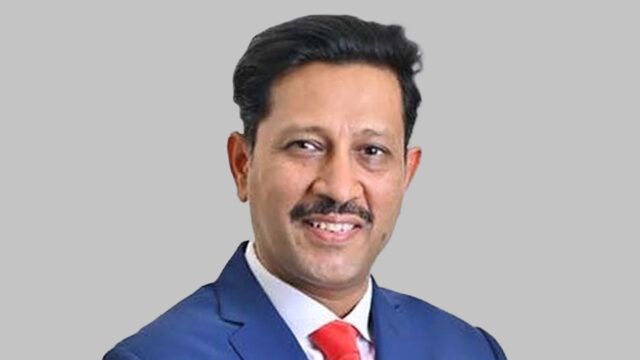AllianzGI’s new India equity head Anand Gupta has made some major changes to the firm’s Indian equity strategies in a bid to outperform a rapidly growing market.
The 20-year investing veteran has strong views on active funds and managers who charge active fees while essentially benchmark hugging.
“Unless you’re doing more than 5% tracking error and you’re delivering more than 2% annualised alpha, generally clients don’t see merit in paying you a fee,” he told FSA in an interview.
“So, I have always produced more than 5% tracking error portfolios and I have increased the tracking error of portfolios since the day I joined.”
Gupta was hired by AllianzGI last December after spending over a decade at Eastspring Investments heading its Indian equity team. Prior to that he was a fund manager at SBI Mutual Fund, India’s largest asset manager.
He said: “We run a very high conviction and a high tracking error portfolio; we want to justify the fee we earn from clients.”
Some of the most notable changes he has made since joining the firm can be seen in its India equity strategy sector weightings.
“When I joined, I found the thinking was similar between the existing India team and I, but the tracking error was low,” he said.
“The examples are IT services: stocks which are dependent on the US economy performing well. They were underweight, but the underweight was small.”
“Likewise, my colleagues were overweight industrials and real estate, but the overweight was very small.”
For reference, the MSCI India index has roughly 11% allocated to IT, roughly 10% allocated towards industrials and a little over 1% allocated to real estate.
“So I just doubled these bets,” Gupta said. “I made IT services zero, and then created more than 10% overweight on industrials.”
Although some might argue that this creates a greater chance for an error of omission, Gupta is confident these changes were made in a “very risk-managed, low correlated way”.
The investment process
Gupta said his investment team follows a growth at a reasonable style (GARP) investment approach, something that he was adamant about sticking to even if market conditions change.
“We have mase our own mistakes and these are very particular to the emerging markets,” he said.
For example, he said that finding an alignment between majority investors and minority investors is more important than getting a cheap valuation.
“Emerging markets is a high growth market,” he added. “Capital preservation, avoiding mistakes is as important as getting a multi bagger.”
One aspect to their investment process that Gupta highlighted is their search for temporary laggards – something which he describes as a mix between a science and an art.
“They are always sectors which are being unloved just because the near term is bad, but the long term is good,” he said.
When it comes to making these calls, he stressed the importance of doing private equity style due diligence on potential investments, and praised AllianzGI’s Grassroots Research division.
It is a global network of journalists, investigators and industry contacts which the firm employs to gather information on under-researched marketplace trends on potential investments.
Gupta also noted that picking stocks in India requires investors to look beyond what company fundamentals may indicate if the government is backing its industry.
Much like the investment mantra, ‘don’t fight the Fed’, Gupta says it’s important investors don’t fight the government.
“If government is against any sector, for whatever reason, don’t fight the government,” he said.
“If government is trying to develop any sector, even if you don’t see earnings right now, if the government is focused on it in terms of plumbing the financing, plumbing the supply chain: four to six quarters down the line, you will start seeing earnings.”
A good backdrop for stock picking in India
Despite high valuations in the booming equity market, Gupta is optimistic on the backdrop for investing in India.
As of the end of July, the MSCI India index traded at a 27.6 price-to-earnings (P/E) ratio, almost twice that of the broader EM index at a 15.9 P/E ratio.
Gupta suggested that the market’s high growth may warrant these higher valuations. “India continues to be the highest growth market within all emerging markets by top down forecasters such as the World Bank and IMF,” he said.
“At the same time India has the highest corporate earnings growth story as forecasted by consensus sell-side estimates.”
He also praised India’s diversified sector composition and low-correlation between its different sectors.
He said that IT services for example, being an export dependent sector, has a very low correlation to the country’s industrial companies which have more domestic-driven businesses.
“India has a very low contribution from state owned enterprise and commodity sectors,” he said, adding that it is a stark contrast to many other emerging markets where most sectors are dependent on state owned enterprises and commodities.
“What this means is you have high growth, you have high quality, which translates into high return on equity,” he explained.
“In this light you will find immense opportunities across sectors, provided you’re willing to do the hard work, provided you have a repeatable investment process.”
He also argued that India will continue to have a very good “funnel” of stocks to choose from because of its growing public markets.
“The number of the stocks today in the benchmark are three times what they were 10 years ago and will continue to expand because a lot of IPOs are coming to market,” he said.

















